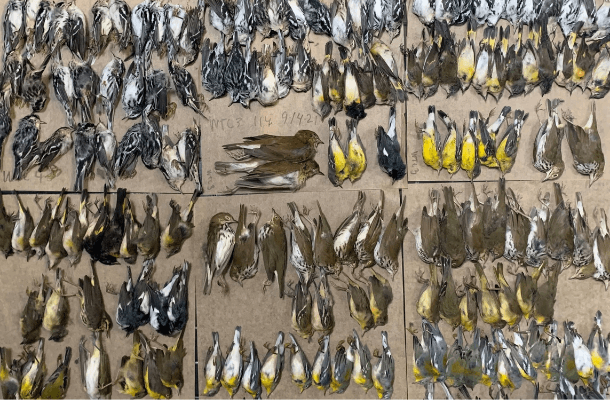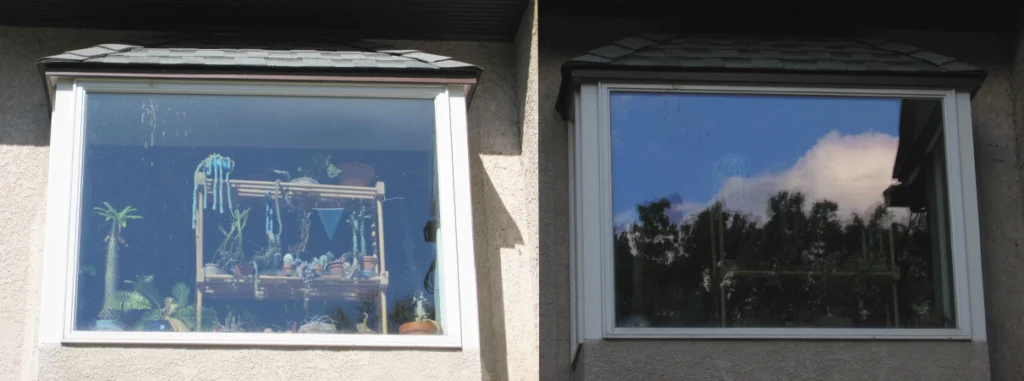Even for intensive collision monitoring programs the total number of dead birds found are always a large underestimate of the number of birds that actually collided with the glass. This is the case for reasons similar to the answer above.
Many of the birds that hit windows do not die immediately and fly off without leaving a trace. One study found that, out of 29 window collisions, only two birds died immediately and left a carcass that at the foot of the window4. However, birds can sustain severe injuries3, so even birds that initially fly away might die elsewhere.
Second, for those birds that do die and end up on the ground, animal scavengers – and people, frequently facilities teams – often remove carcasses before monitors can find them. Collision monitors even report animals, such as gulls and squirrels, learning to wait at windows where collisions occur for an easy meal. This problem is so serious that academic monitoring efforts conduct “carcass persistence studies” to estimate the number of dead birds removed before monitors walk their routes and find them5,6.
The rate at which dead and injured birds disappear can vary a lot from site to site7; researchers have found that in some places carcasses are removed within hours8 while at others it takes days5,6,7. At some locations in NYC, for example, only 25% of carcasses placed on collision monitoring routes remained when collisions monitors walked their routes later the same morning8.
Finally, for those birds that are left, monitors do not always detect all of them9. Birds may fall on inaccessible rooftops, fall through grates, end up in landscaping, land in dense vegetation that makes them difficult to see, be swept away in the gutter, or just overlooked because they blend in with the ground.
In one study where researchers accounted for both scavenging and imperfect detection, they estimated that only about 20% of birds killed were actually found by people who were searching for them9. So, it is safe to say that any number of birds picked up in a monitoring effort especially if it is not a rigorous monitoring effort, is going to be a small fraction of the birds that actually died and an even smaller fraction of the total number of birds that hit the windows.












